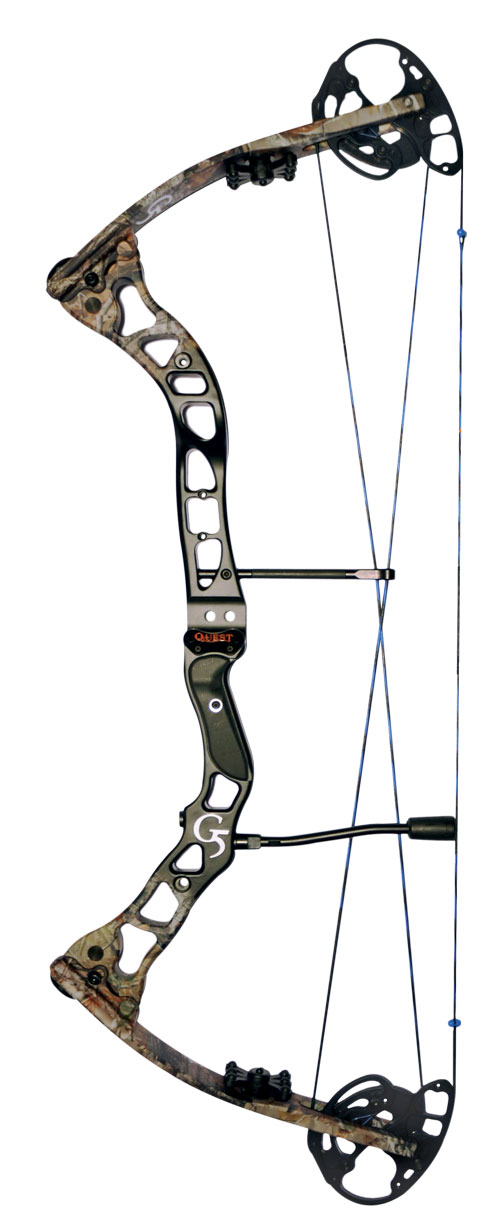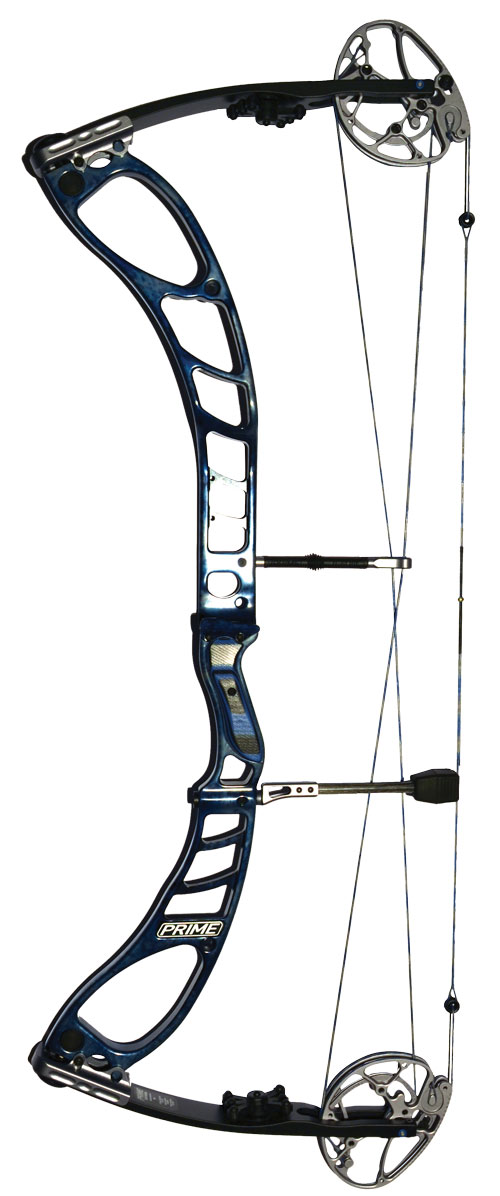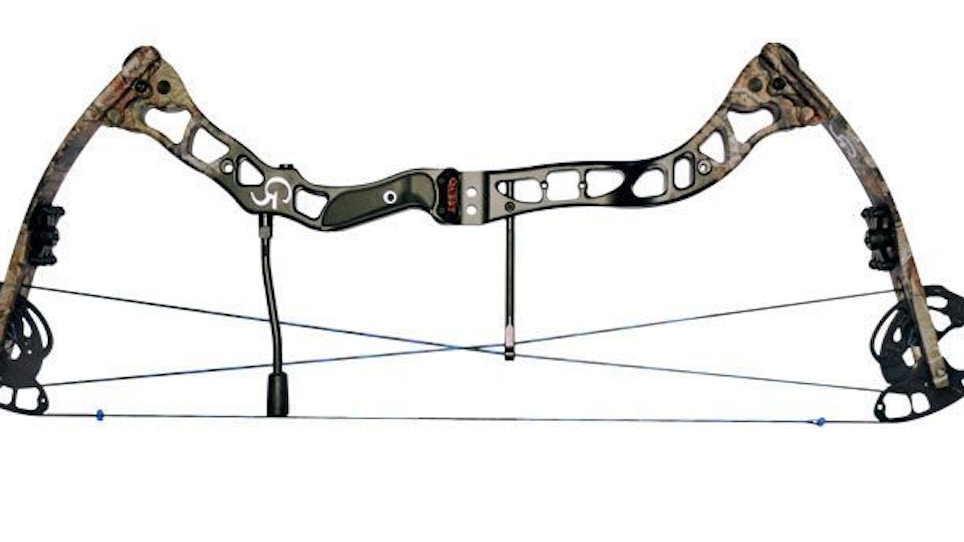 Memphis, Tennessee? Birthplace of the Blues. Memphis, Egypt? Thrones of the Pharaohs. Memphis, Michigan? Headquarters of Grace Engineering and Quest Bows.
Memphis, Tennessee? Birthplace of the Blues. Memphis, Egypt? Thrones of the Pharaohs. Memphis, Michigan? Headquarters of Grace Engineering and Quest Bows.
Quest Bowhunting traces its beginning to 1966 when Leo Grace, Sr. started Grace Engineering—“Precision Products Through Innovative Engineering”—in a hundred-year-old flour mill. In the ‘80s, Lou Grace, Leo’s son, took over and focused on precision manufacturing for the medical, hydraulic, and automotive industries, as well as high speed credit card embossing.
In 2000, Lou and his sons, Matt and Nate, founded G5 Outdoors with an all-steel broadhead. The next year came the Montec broadhead and soon, products compounded: sights, quivers, rests, and more broadheads. In 2009, they introduced Quest Bowhunting to become—except for arrows—a one-stop hunting shop.
Brand Manager Joel Harris says their mission is simple and has not changed since the company’s founding a dozen years ago: to build a products with the highest level of craftsmanship and quality the industry has seen, and market them for a good price. “We want to be Number One,” he says.
Unlike other bow companies which have dozens of models, Quest’s current line-up offers only five bows. Each is designed to take advantage of common elements, thus maximizing manufacturing efficiencies and saving money for the end user by selling with realistic, yet profitable margins. All are 80-percent letoff hunting bows with above-the-rest cable guards and adjustable, below-the-rest string bumpers (string stops). All have forged, CNC machined 6061 aluminum reflex risers, solid fiberglass limbs and machined aluminum pivoting limb pockets. Advertised prices begin with the Primal at $730-$750 and drop to the Torch, $400-$430.
In a YouTube.com video, CEO Matt Grace refers to the riser as the “backbone of the bow” and notes that the more flex a manufacturer can take out of the riser the more consistent the bow performs and the more durable it will be. By forging risers, Quest engages in a complex process of heating and pounding a raw billet to realign and strengthen the microscopic grain structure of the aluminum.
Primal is Quest’s top-of-the-line and most expensive bow. Its specifications are solid: 32 inches ATA, 332 fps, and peak draw weights of 50, 60, or 70 pounds.
At about $100 less, the Rev is essentially the same bow but without what Quest calls the I-Glide Flex, a flexible cable guard system. The I-Glide allows cables to move toward the arrow as the string is drawn. This patent-pending concept helps stabilize the bow and reduces cam lean 25 percent by reducing side load on cables during the draw.
Nate Grace, who is responsible for G5 engineering and design, says the “technical ceramic” element that holds the cables is practically frictionless and thus enhances bow performance. It is silent, unaffected by temperature and, although it flexes, there are no moving parts, no slides or rollers, to wear out. The I-Glide Flex is also available on the Quest Torrent.
Its patent-pending Twin Track SYNC Cam provides a smooth draw cycle and a solid back wall. It is a modular-based system that contains adjustable draw stops to modify letoff and it accommodates ½-inch increment draw lengths from 26.5 to 30 inches on the Primal, and 27 to 30.5 inches on the Rev.
See page 2 for more.
 Quest’s Torrent (31 inches ATA, 322 fps) and Rogue (31 inches ATA, 312 fps) are built with the Fluid single cam system. This cam uses a rotating module that allows change of draw lengths without a bow press, and with only one module. The Fluid cam concept creates a smooth, consistent draw cycle so hunters can enjoy shooting their setup year-round.
Quest’s Torrent (31 inches ATA, 322 fps) and Rogue (31 inches ATA, 312 fps) are built with the Fluid single cam system. This cam uses a rotating module that allows change of draw lengths without a bow press, and with only one module. The Fluid cam concept creates a smooth, consistent draw cycle so hunters can enjoy shooting their setup year-round.
The Torch (33 inches ATA, 292 fps) is designed for short draw archers. With this bow, Quest offers a “Grow as You Go” guarantee allowing archers to increase poundage and draw length to 70 pounds and 30 inches over time. Standard draw lengths are 24 to 28 inches, and peak draw weight 45 pounds.
The standard Quest camo is Realtree AP applied by a sublimation process (imagine dry ice turning to a gas without becoming a liquid first) they call DuraFuse, instead of water transfer. This gives patterns extra durability and superior shelf appeal, says Quest, because it exactly transfers patterns in full 3-D with no stretching or altering of pattern integrity. Custom G-Fade options are available.
G5 also builds a high-end, dealer-only bow line called Prime. Sold through G5’s sales rep groups, it offers dealers a 35-mile protected territory. For 2012, Prime has two bows, the Centroid LR and the Shift LR (both $999 with 80 percent let-off, beyond-parallel solid limbs, Parallel Cams and Flexible Titanium cable guard systems) which are built with upgraded 7000-series aluminum which, Brand Manager Harris says allows for lighter, thinner, stiffer risers.
Specifications for Prime’s Centroid LR: 332 fps, 34.25 inches ATA, 27-31 inch draw lengths in ½-inch increments and peak weights of 50, 60, 70 pounds. The 2012 model is 15 percent stiffer and .20 pounds (9 percent) lighter than the 2011 model.
Specifications for Prime’s Shift LR: 332 fps, 30 inches ATA, 26-30 inch draw lengths in ½-inch increments and peak weights of 50, 60, 70 pounds. The 2012 model is 8 percent stiffer and .027 pounds (12 percent) lighter.
Quest Bowhunting (Quest Outdoors) is a division of G5 Outdoors http://g5outdoors.com, located at 34775 Potter Street (P.O. Box 59), Memphis, MI 48041. The toll free dealer number is (866) 456-8836;; http://questbowhunting.com and http://g5prime.com/. Quest also communicates via Facebook.com and Twitter.com, and numerous videos are posted on YouTube.com. To find out more about parent company Grace Engineering try www.graceeng.com.






